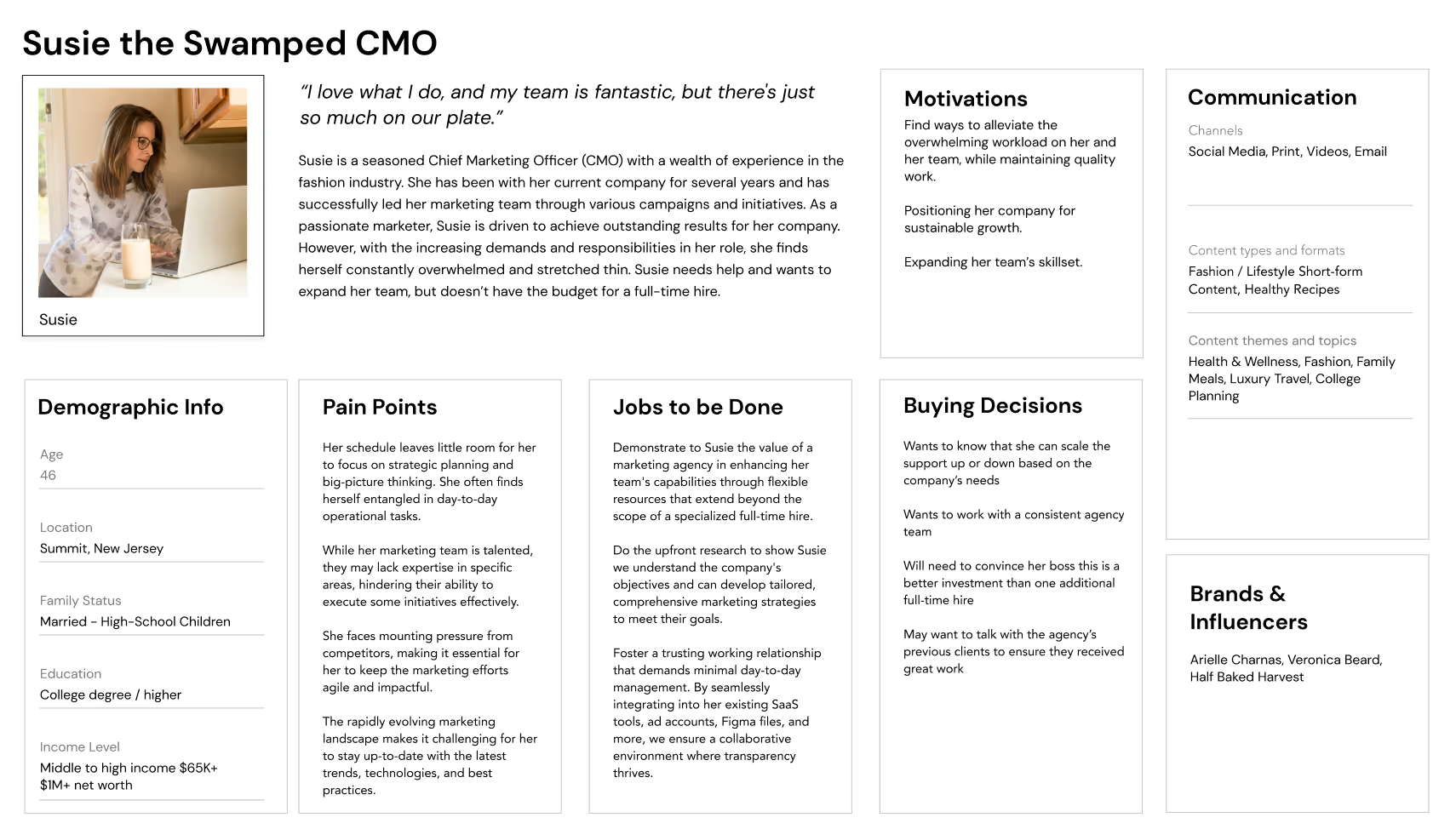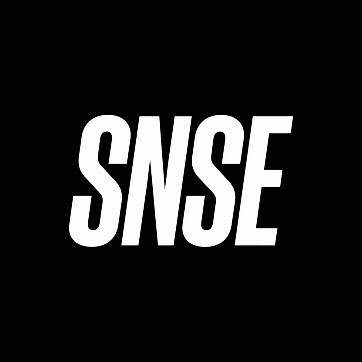In a world saturated with logos, crafting an impactful and resonant brand is key to a company’s success. Yet often company leaders are so captivated by their vision, they often ignore arguably the most crucial perspective - their customers.
User personas are the cornerstone for crafting highly-evolved brands and campaigns. They’re a must do exercise for understanding your target consumer’s needs. Plus the process is fun; it involves strategic thinking, creativity and teamwork.
As brand, marketing and UX experts working with clients across industries, we’re constantly creating personas. With that, we’ve honed a repeatable process and comprehensive template to guide you on your persona creation journey.
Are you ready to propel your brand to the forefront of consumers’ minds? Here’s our step-by-step guide to building compelling personas that resonate.
Determine the impetus for creating user personas
There are many instances that can be the impetus for creating or updating user personas. Developing your brand, creating a new product, updating your website, launching a new marketing campaign are just a few examples. Really any time you’re developing something for someone else is a good time to create a persona. It will help you guide the development process and connect with your audience.
Talk to customers (and potential future customers)
The meat of your customer personas will come from the insights you gather from your target audience. A great place to start is conducting qualitative interviews with existing customers (in the case of a refresh), or with people that you believe fall within your target (backed by prior product and market research, of course). We use User Interviews, and they can help you recruit participants or conduct interviews with your own participants. You can complement these conversations with quantitative surveys, website and social insights, existing feedback, and more.
Segment your customers
You’ve done the research; now it's time to organize it. The goal here is to identify common characteristics amongst enthusiastic (and not so enthusiastic) interviewees which can later be segmented into different buyer personas. Divide your interviewees into different segments based on similarities in demographics, behavior, preferences, and interest in your product or services etc. These segments will later become your personas.
Build your personas
Congratulations! You’re now ready to craft your user personas. We’ll use Susie the Swamped CMO as an example, a target persona for Creature. It's important to note that Susie is not an actual individual we interviewed, but rather an amalgamation of four different customers who have shown significant interest in our services for similar reasons and possess similar characteristics.

Profile: For each segment, create a fictional character with a name, background and characteristics that represent the segment. Be sure to include age, gender, occupation, location, interests, hobbies, and family status. Bonus points for giving the persona a fun and intuitive name that will be easy for your team to remember. Fun fact: Susie the Swamped CMO was almost named Olivia the Overworked CMO.
Motivations: For each segment you've established, determine the specific goals and objectives that pertain to their interactions with your business. For example, Susie is interested in working with a marketing agency because she is looking for ways to alleviate the overwhelming workload on her and her team, while maintaining quality work.
Pain Points: Understand the needs and pain points challenging each persona. For instance, Susie’s schedule leaves little room for her to focus on strategic planning and big-picture thinking. She often finds herself entangled in day-to-day operational tasks. This insight will help agencies create a value proposition that resonates with Susie.
Jobs to Be Done: Outline what your persona is trying to accomplish by using your product or service. In doing so, you enter Susie’s shoes and can better understand how to tailor your offering to her needs. Susie wants to scale her company’s marketing abilities, and she thinks her team does a great job but they’re still strapped. Although she recognizes the potential benefits of having an agency's extra support, she is concerned that they might lack the in-depth understanding of her company, which could impact the quality of their work. By incorporating this concern into the persona, the agency becomes capable of anticipating and addressing Susie's worries before she even has the opportunity to voice them.
Buying Decisions: Outline the considerations that your personas would make when deciding whether or not to purchase your product or service. What would encourage or prevent Susie from working with our agency? Examples of buying considerations include price, value, reputation, range of services, and word-of-mouth referrals. As the agency targets clients similar to Susie, they prioritize understanding her purchasing decisions to tailor fitting solutions in their marketing and sales approaches. This customer-centric approach ensures the agency offers suitable solutions that resonate with Susie and meet her needs effectively.
Communication: Get to know where your personas look to for guidance, and which communication channels they frequent. This is key to ensuring you know how to reach them.
Keep in mind that Susie is an ideal customer for our agency, but she’s not the only persona we reference. We also have Thad the Thriving Creative Director who recently got promoted, is consistently delivering amazing work, and has all the resources he needs to keep going. While the agency could help Thad, he doesn’t need it and therefore is not going to seek out their services. No disrespect to Thad, but trying to land a deal with him would be a waste of time. We’ll just let Thad keep thriving.
Test your personas: You’ve got personas and you’ve nailed it! Well, not quite. It’s always a good idea to validate your personas and ensure you’ve accurately represented your target audience. There are various effective methods for this, such as conducting user interviews (take two), utilizing surveys, or implementing ad sprints (our personal favorite). We like using ad sprints to validate user personas, because it takes you out of the hypothetical and into the real world where users unknowingly participate in research, ensuring unbiased insights. Plus, the learnings from these ad sprints will be useful down the road in future digital campaigns.
Here’s how you can do this. Take your buyer persona characteristics and create an affinity audience on your key advertising platforms. Create an ad to test against that audience. This ad should communicate your value proposition in a way that meets the persona’s needs and pain points. And, it’s always a good idea to include a baseline audience to compare to. Analyze the findings and if the audiences modeled after your target personas are your highest performers, it’s a good indication you’ve gotten it right. And, you can scale those audiences for future campaigns!
–
We hope you enjoyed our guide to creating user personas. Remember, the key to creating realistic and effective personas is putting yourself in your customer’s shoes, and trying to see the world from their perspective. And, just like a great brand platform, user personas are living documents that should be periodically reviewed and updated as your business evolves and customer preferences change.
Don't forget to check out our free User Persona Figma template. Just copy and paste it into your own brand and product development boards!
And, if you ever need help, whether it’s with personas, marketing support like Susie the Swamped CMO, or anything else brand, marketing or experience related, we’re here to help. Reach out!








